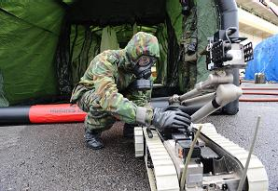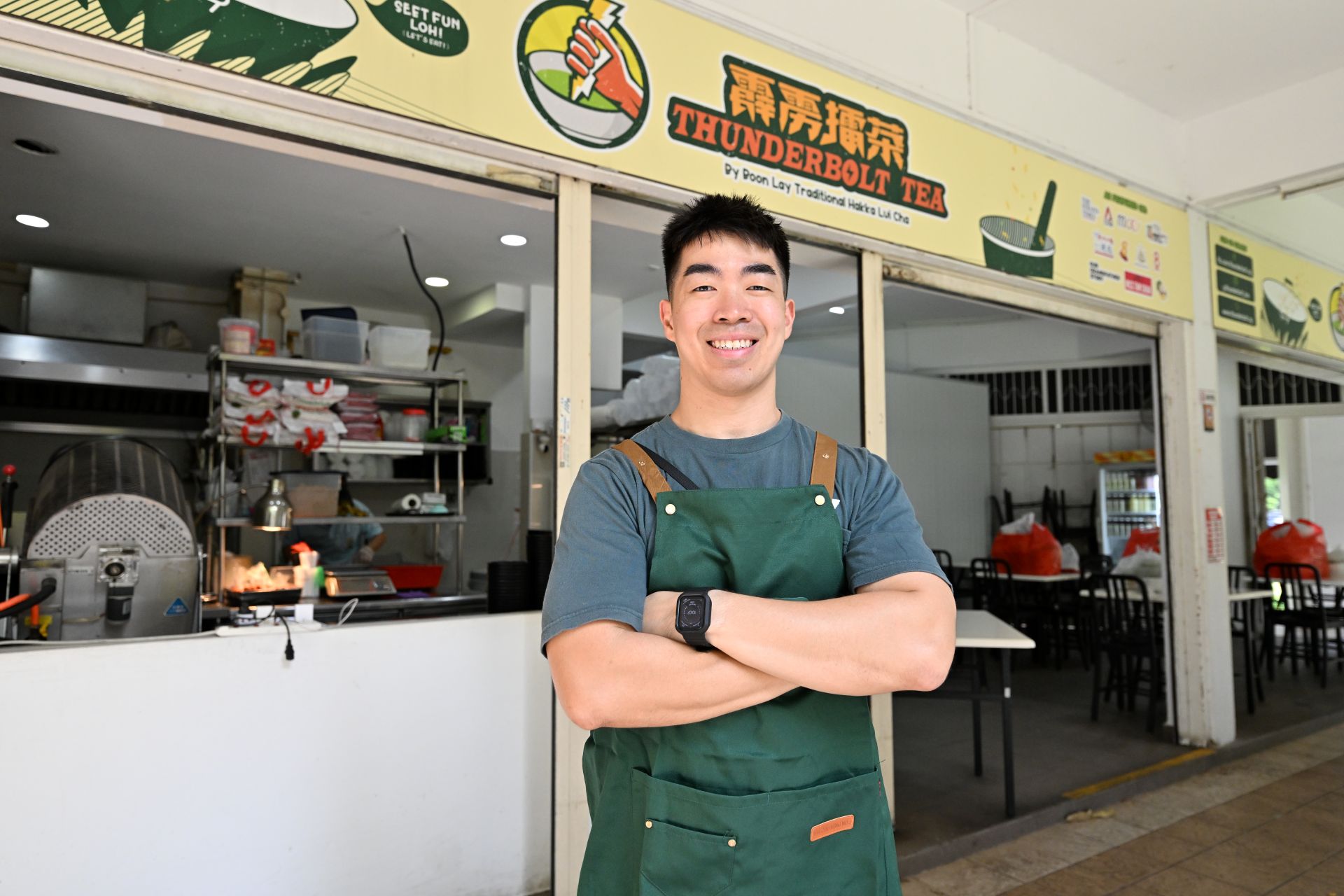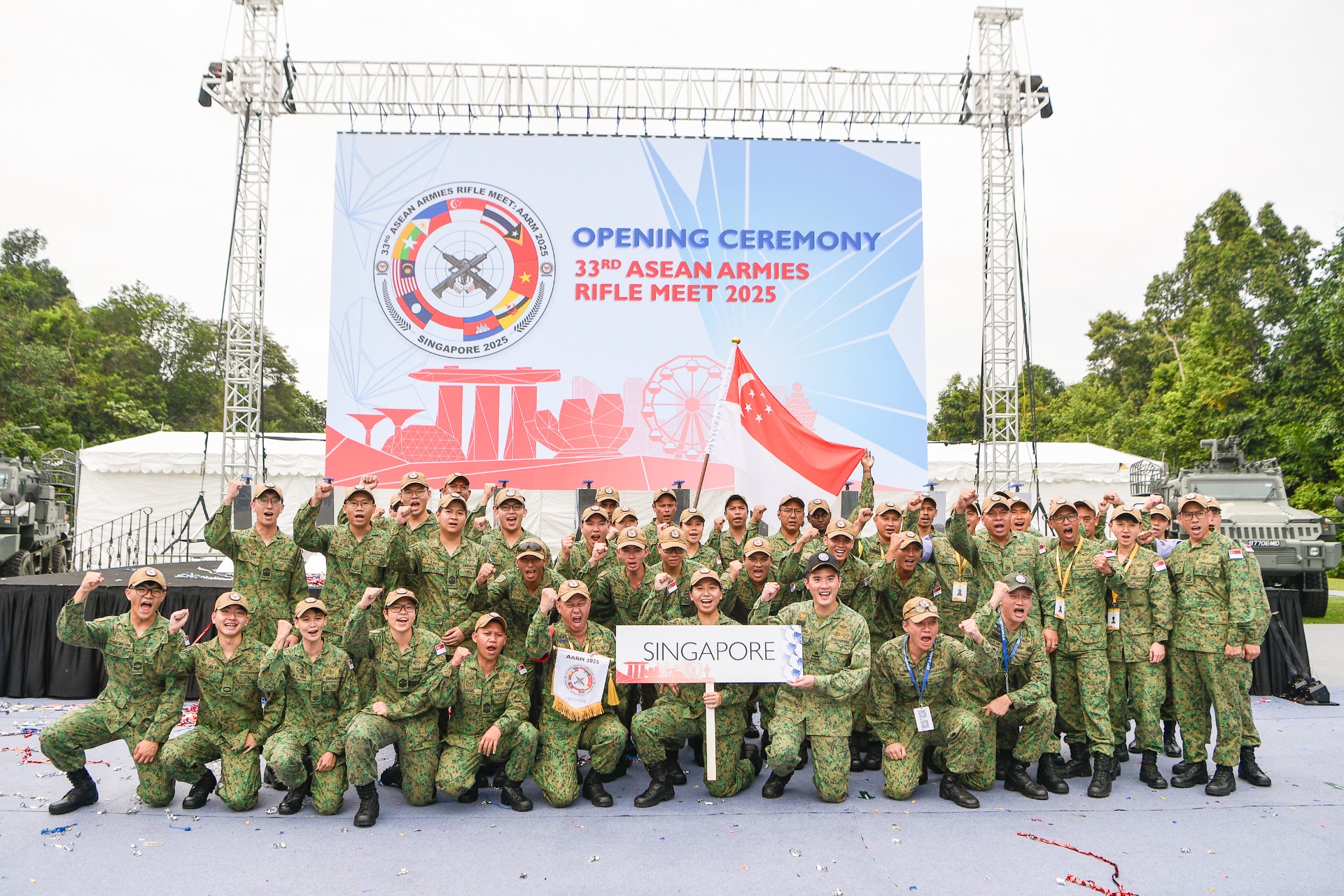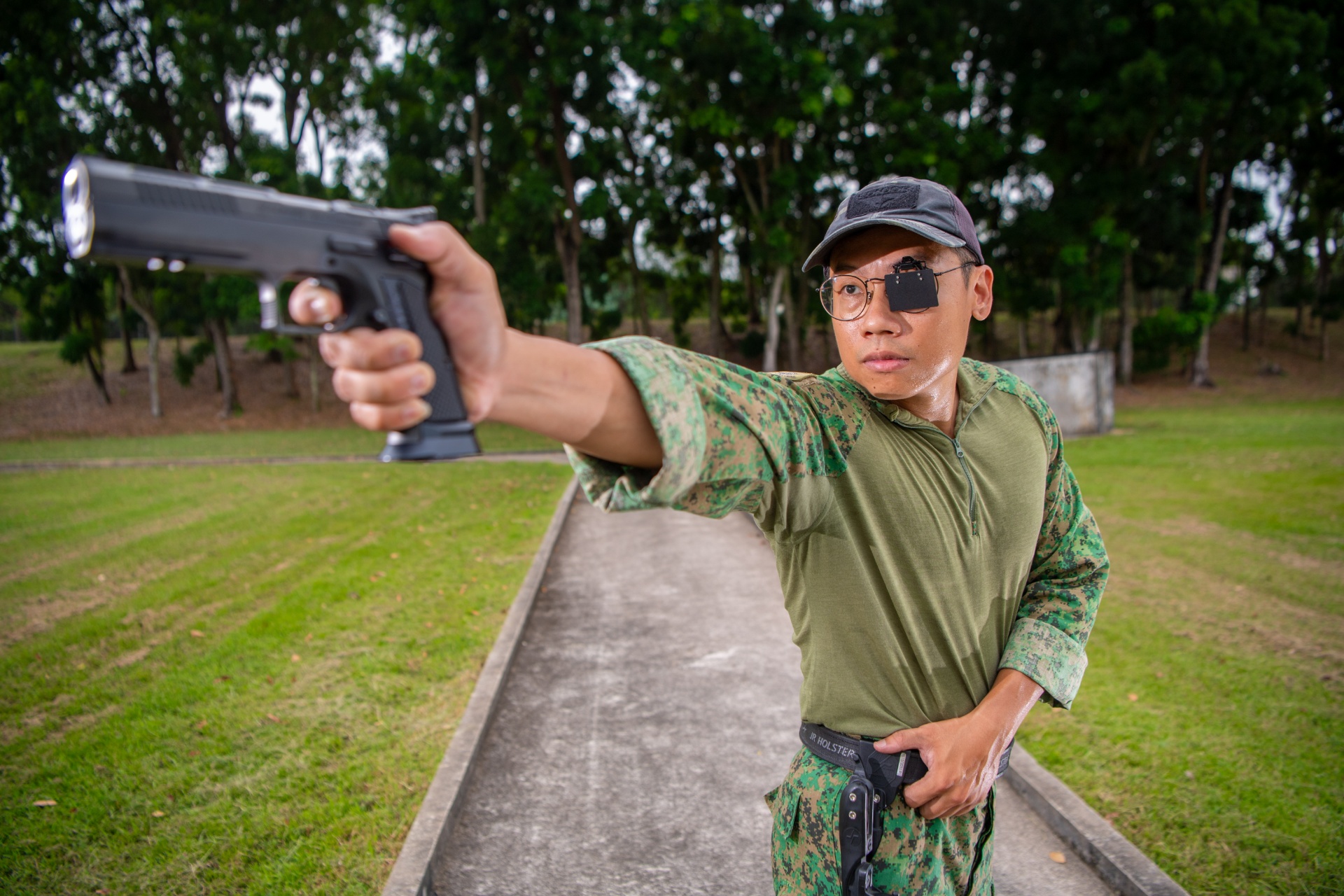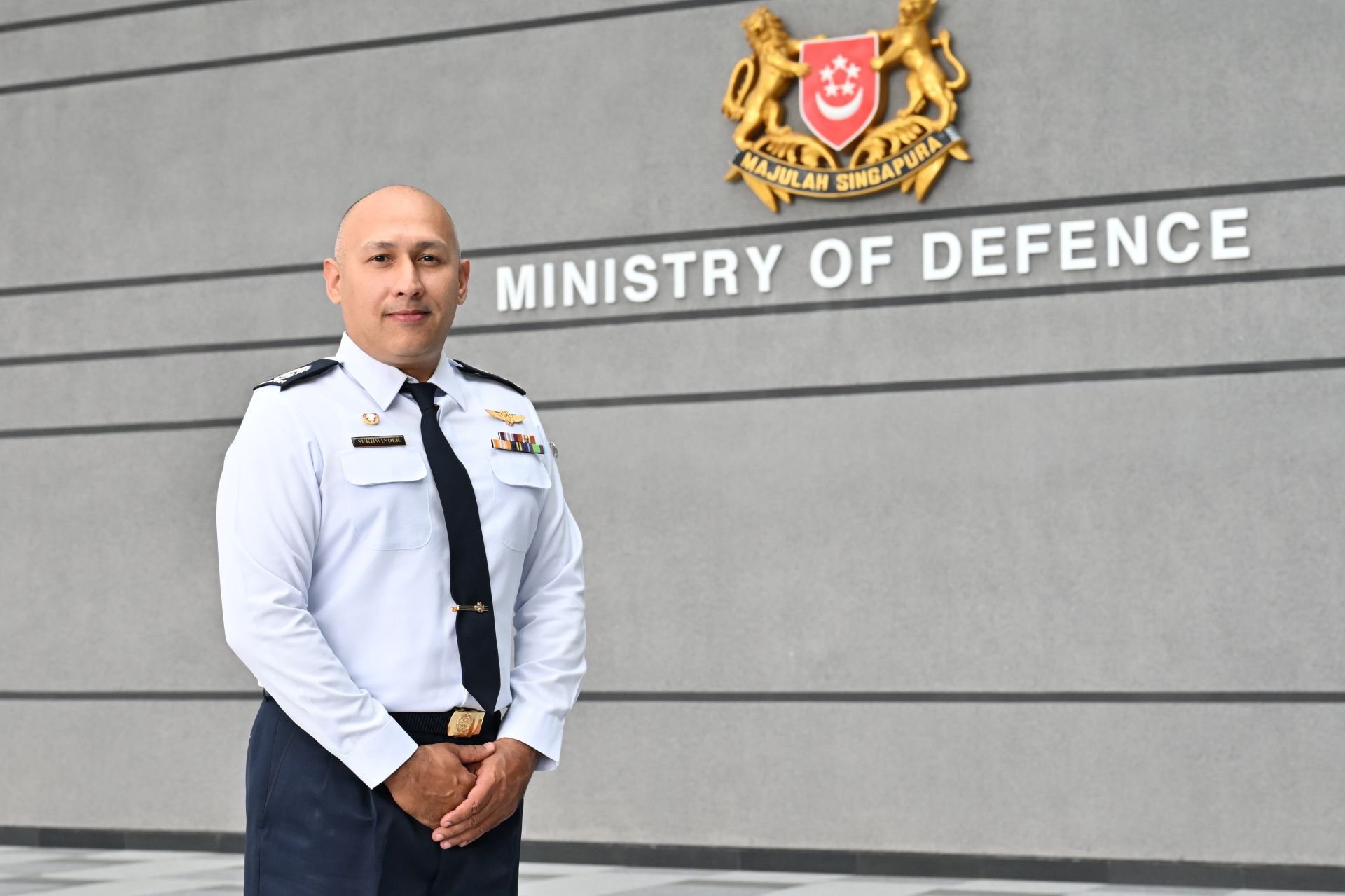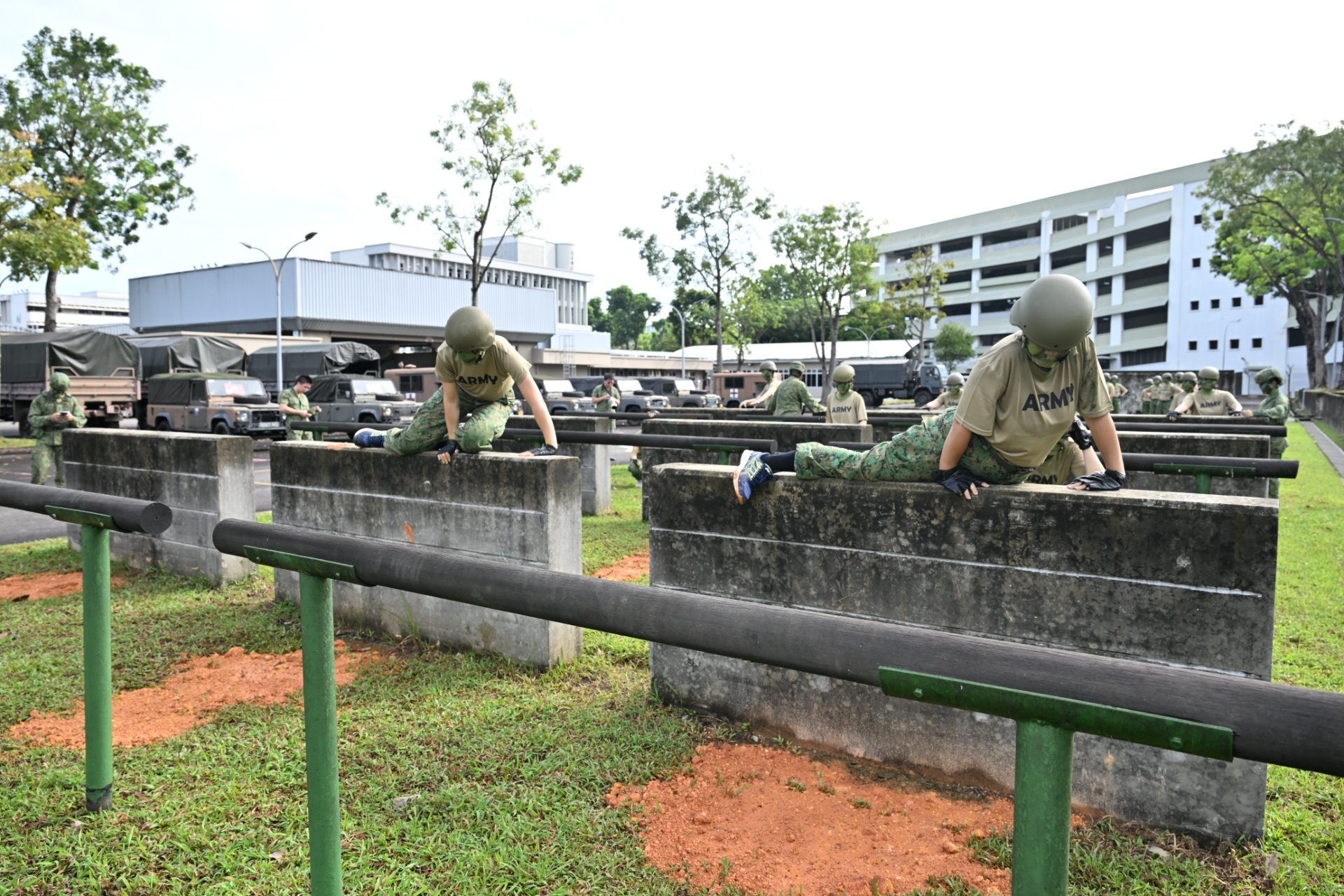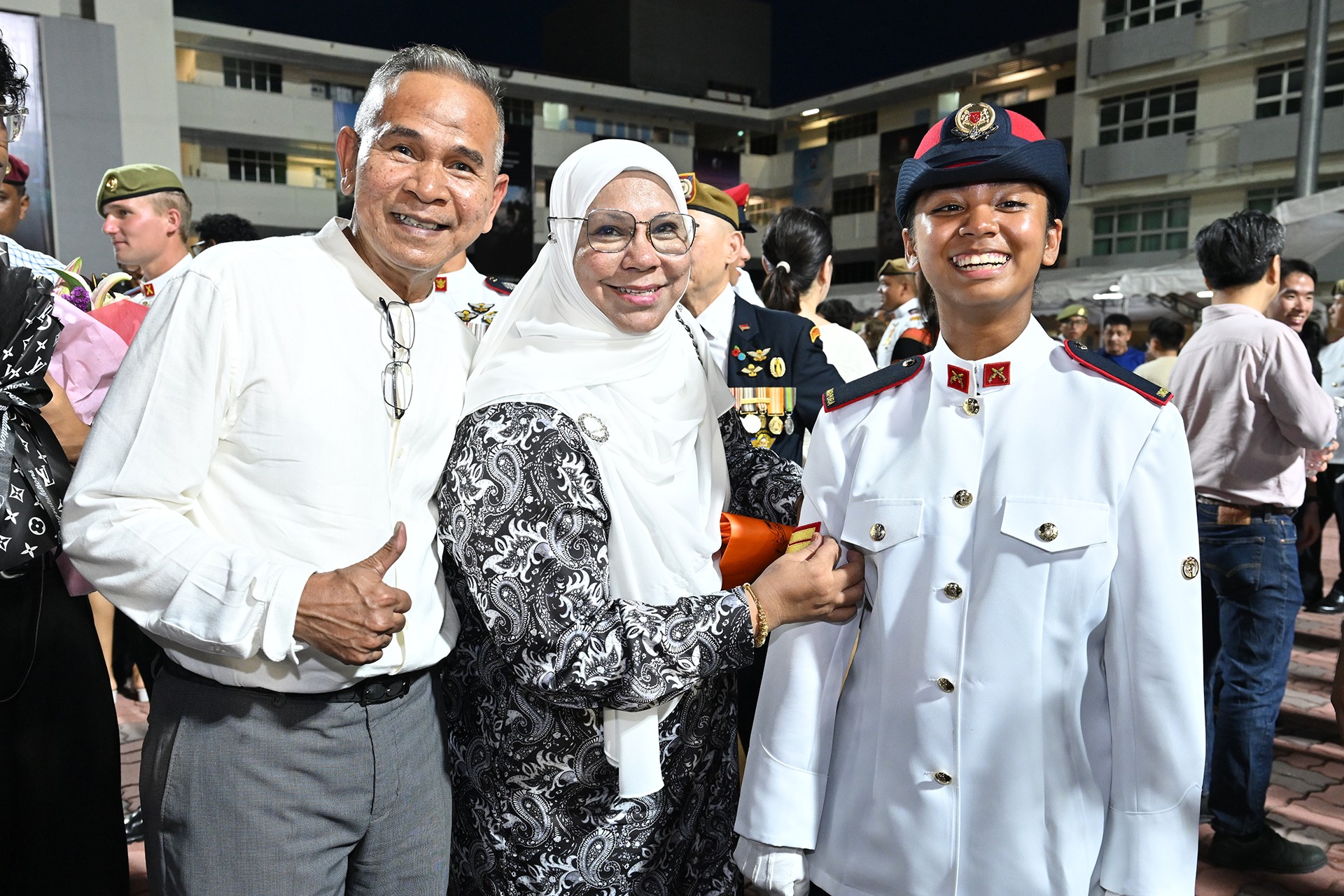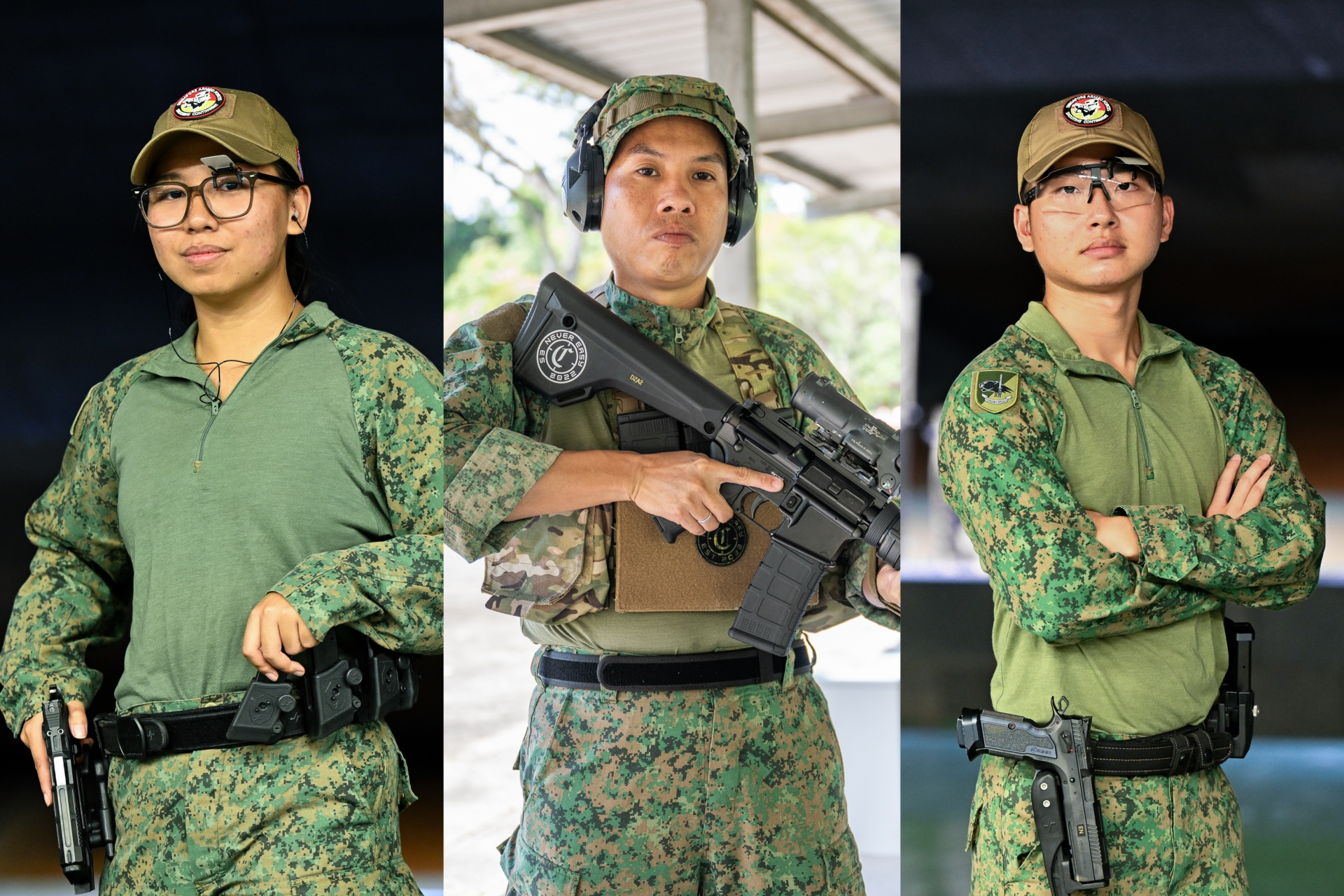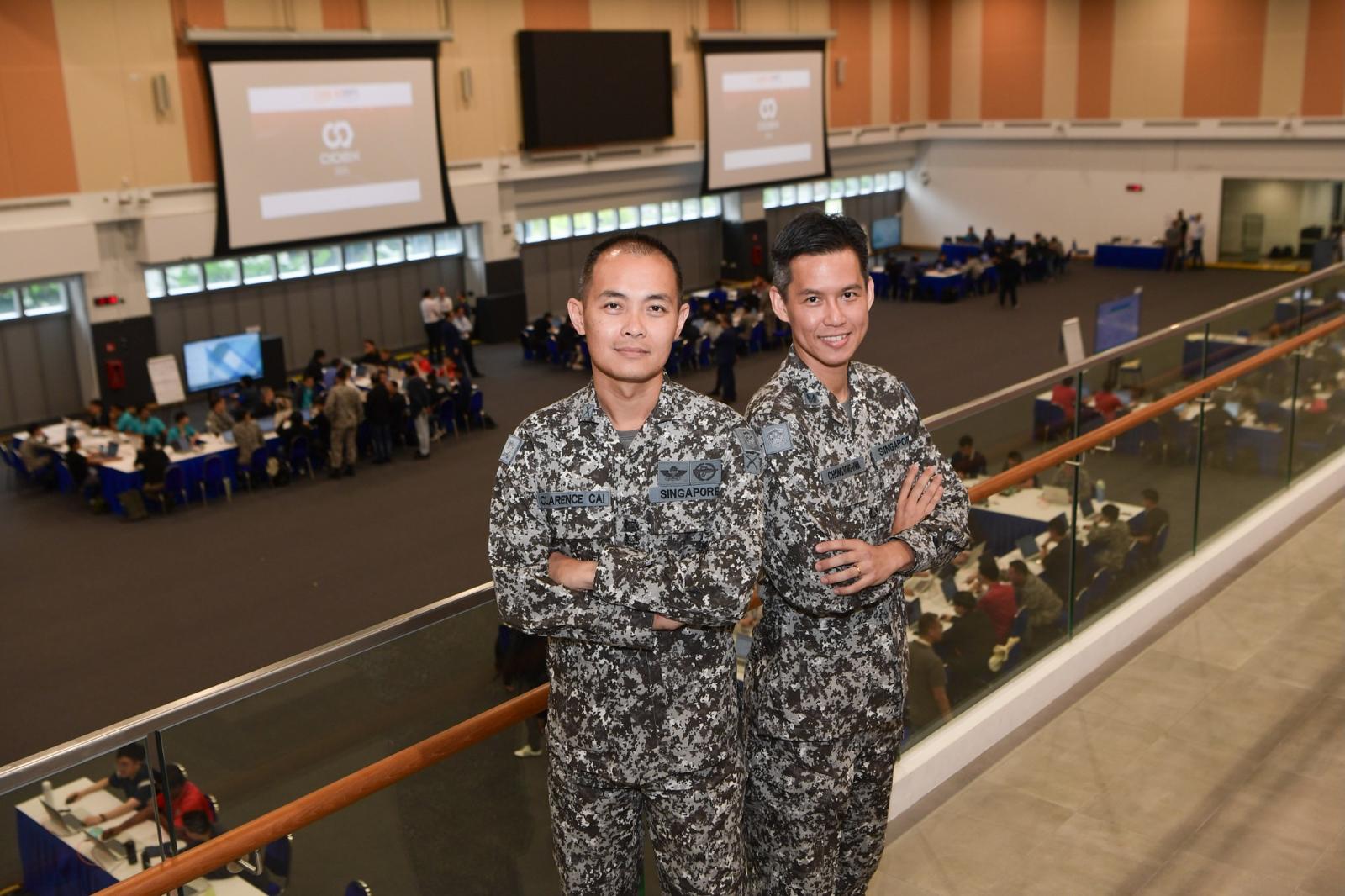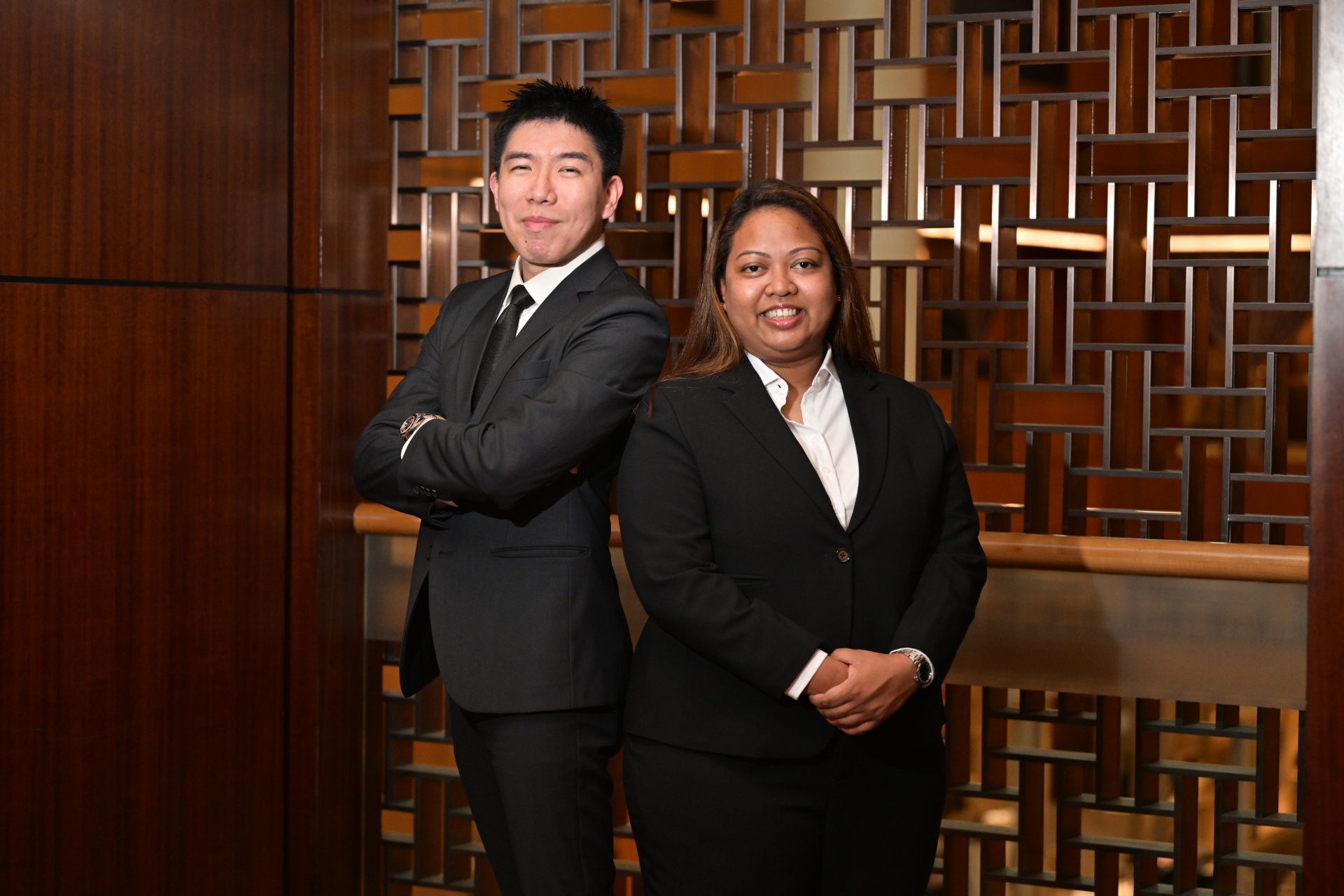TRAINED FOR NON-CONVENTIONAL THREATS
PHOTO // Chua Soon Lye and Timothy Sim
Special skills and in-depth knowledge are essential tools in the combat of Chemical, Biological, Radiological and Explosives (CBRE) threats. PIONEER talks to the team that keeps Singapore safe from such dangers.
It was stifling in the Explosives Ordnance Disposal (EOD) 9 Suit, and my feet could not move more than an inch in any direction. Tottering around like a Teletubby, I struggled to even flex my fingers in a vaguely familiar fashion.
Wearing the suit - which weighs a staggering 30kg - for a few moments proved a daunting task for me and yet operating under stressful circumstances while suited up is exactly what members of the EOD team are trained for.
The 36th Battalion Singapore Combat Engineers (SCE) is the EOD arm of the Singapore Armed Forces' (SAF's) CBRE Defence Group. The group comprises 36 and 39 SCE, and the Medical Response Force (MRF) from the SAF Medical Corps, which renders medical treatment to casualties of chemical and biological agents.
As the chemical, biological and radiological defence (CBRD) team of the SAF, 39 SCE performs the critical role of decontaminating incident sites that contain chemical or biological hazards, and removing radiological hazards. The unit is also trained and equipped to handle long operations and multiple incidents.
And as opposed to the reckless EOD team commander Jeremy Renner plays in the Hollywood hit The Hurt Locker, MAJ Alan Loh, Head of General Staff at the CBRE Defence Group's headquarters, will tell you that the members of the group are required to be just the opposite - they have to be a "calm, thorough and creative" lot.
Knowledge is power
Every member of the 36 SCE team has to attend lectures covering myriad topics such as the characteristics of gun powder, the various classifications of explosive ordnance, EOD hazards and safety precautions, effects of high explosives. They are also required to take part in in-depth discussions on improvised explosive devices (IEDs).
Similarly, 39 SCE also puts its soldiers through specialised theory lessons.
Theoretical components of the specialised CBRD course include lectures on the fundamentals of radiation, effects of weather and terrain on chemical and biological warfare agents, toxic industrial chemical agents and radioactive materials, as well as chemical downwind hazard prediction.
In today's world where blueprints on IEDs are readily available online and chemicals such as Anthrax are common tools of insurgents, knowledge is power.
Therefore, on top of regular physical and theoretical training, the teams stay relevant through regular updates disseminated by the SAF CBRE Data Centre, which integrates CBRE intelligence, operational experience and technical expertise in one repository.
Practice makes perfect
With regard to practical training, Lieutenant Colonel (LTC) Ong Hoon Hong, the Commanding Officer of 36 SCE, said: "We carry out drills to build up safety awareness and familiarisation with procedures in our response teams.
"Additionally, we conduct live-firing sessions where we go through the basics of demolition and test out new concepts of IEDs to build operators' confidence in handling explosives." 36 SCE also conducts bilateral training with their US counterparts to learn from their experienced EOD troops.
As for 39 SCE personnel, training includes route marches of up to 4km in their Mission-oriented protective posture (Mopp) 4 suits, and even play sports such as soccer, basketball and captain's ball with their masks on as part of their acclimatisation training.
"Your field of vision is very restricted with the mask on, and communication range is reduced also...thus initial training via games, for example, is important in helping you adapt to operating in the field with it," said MAJ Loh.
Added Lance Corporal Dishon David of 39 SCE: "The most memorable training experience was going into a smoke training facility that was filled with CS gas (commonly known as tear gas) in our Mopp 4 suits. We were then told to remove our masks to experience the biting sensation of the tear gas to help familiarise ourselves with it!"
CBRD training constantly evolves to take on a new, more open-ended dimension, and encapsulates scenario-based training which simulates attacks in everyday settings such as the interior of ships, aircraft, hotels and conference rooms.
LTC Paul Chan, Commanding Officer 39 SCE, noted: "We have to keep in mind the numerous permutations of scenarios for CBR threats, and hence our personnel need to be very flexible and have a high level of situational awareness."
Safety a top priority
Handling lethal substances and explosive devices every day is not a task for the faint-hearted, and the men and women of the CBRE Defence Group understand the need for safety to be a top priority in every operation.
To this end, a sophisticated range of robots is employed to assist the group in its tasks. Robots like the Twin Retort, Mk 8 Plus II and the Defender allow for surveillance and photographic reconnaissance, and even the destruction of suspected devices, without the need to put personnel in harm s way.
"Safety is our first priority. Thus our primary method will always be to work via remote means first...it is only when we exhaust our remote means that the team commander goes in with the bomb suit and a weapon to disrupt the explosive device," explained Staff Sergeant (SSG) Adrian Teo, EOD Team Commander, 36 SCE.
Supported by two men and an Arms and Explosives Search (AES) dog handler and his dog, SSG Teo is the guy who dons the EOD 9 Suit in the rare cases when an explosive device needs manual identification and defusing.
Today, more than ever, the CBRE Defence Group plays a crucial role in the SAF's defence against non-conventional warfare.
As the national responders for threats stemming from explosives and ordnance, the CBRE Defence Group conducts pre-event sweeps and is on duty during every major national event such as National Day Parade.
An anonymous source once said: "All the arms we need are for hugging".
Until the day that becomes reality, Singapore can be sure to count on the SAF's CBRE Defence Group to adopt a networked and collective approach in CBRE defence.
Blue encapsulator suit
Worn by: CBRD responders operating in CBR-contaminated environments.
Capabilities: The highest level of protection against absorption and inhalation threats posed by chemical warfare agents (CWAs), biological war agents (BWAs) and toxic industrial chemicals (TICas).
Weight: 19kg (Suit - 8kg, Self-Contained Breathing Apparatus [SCBA] - 11kg)
Dark green Chemical Lightweight Decontamination (CLD) suit
Worn by: CBRD responders operating in CBR-contaminated environments.
Capabilities: Provides up to 24 hours of protection against liquid CWAs. Offers inhalation protection against CWAs, BWAs and TICs and a high level of protection against absorption threats.
Weight: 11.5kg (suit - 0.5kg, SCBA - 11kg)
Dark green CLD suit
Worn by: CBRD responders operating in CBR-contaminated environments.
Capabilities: Provides up to 24 hours protection against liquid CWAs. Offers the same level of absorption protection against CBR threats as a Level B suit.
Weight: Suit - 0.5kg
Mission-oriented protective posture (Mopp 4) suit
Worn by: SAF personnel across multiple operational scenarios.
Capabilities: Provides up to
ix hours absorption protection against liquid CWAs.
Weight: Suit - 4kg
EOD 9 Bomb Suit
Worn by: SAF personnel across multiple operational scenarios.
Capabilities: Provides protection against the four conventional threats associated with an explosive: blast overpressure, fragmentation, impact, and heat and flash.
Weight: 30kg
